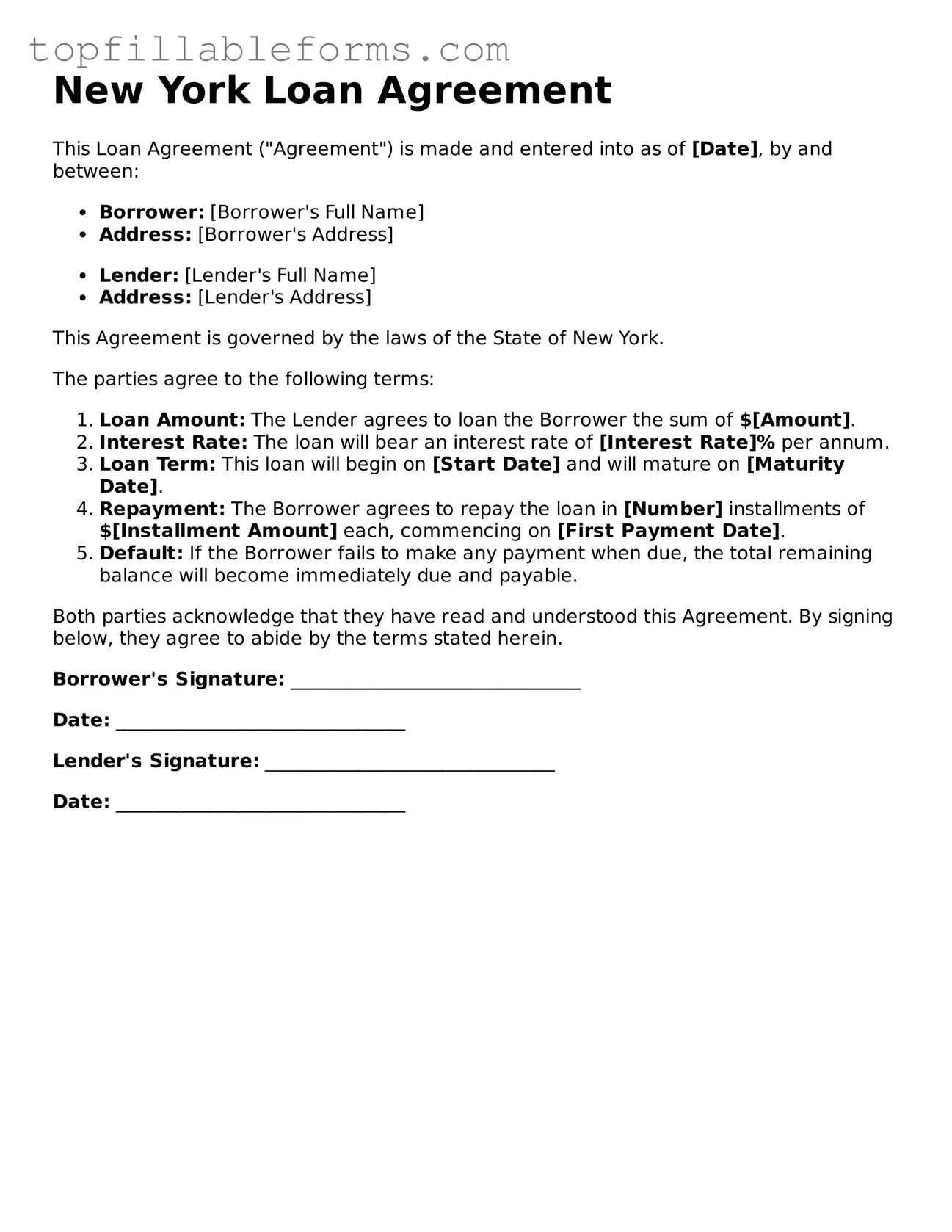New York Loan Agreement
This Loan Agreement ("Agreement") is made and entered into as of [Date], by and between:
- Borrower: [Borrower's Full Name]
- Address: [Borrower's Address]
- Lender: [Lender's Full Name]
- Address: [Lender's Address]
This Agreement is governed by the laws of the State of New York.
The parties agree to the following terms:
- Loan Amount: The Lender agrees to loan the Borrower the sum of $[Amount].
- Interest Rate: The loan will bear an interest rate of [Interest Rate]% per annum.
- Loan Term: This loan will begin on [Start Date] and will mature on [Maturity Date].
- Repayment: The Borrower agrees to repay the loan in [Number] installments of $[Installment Amount] each, commencing on [First Payment Date].
- Default: If the Borrower fails to make any payment when due, the total remaining balance will become immediately due and payable.
Both parties acknowledge that they have read and understood this Agreement. By signing below, they agree to abide by the terms stated herein.
Borrower's Signature: _______________________________
Date: _______________________________
Lender's Signature: _______________________________
Date: _______________________________
